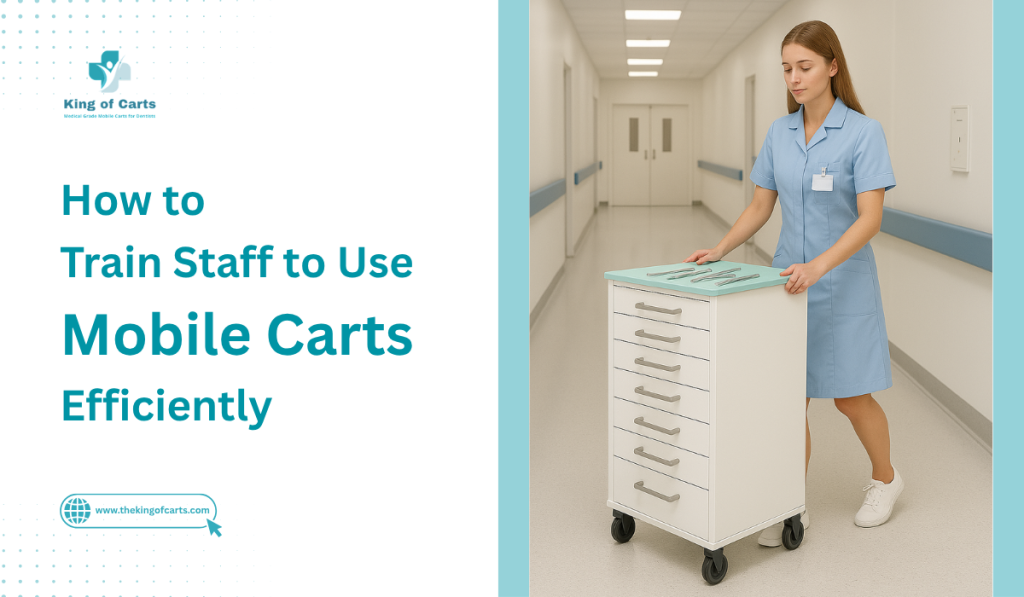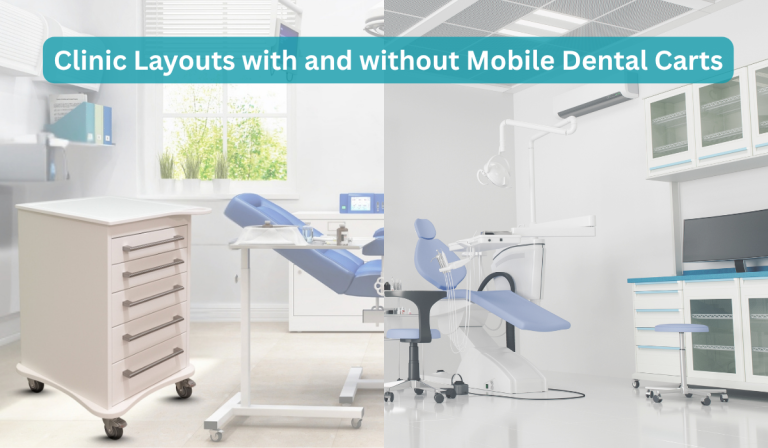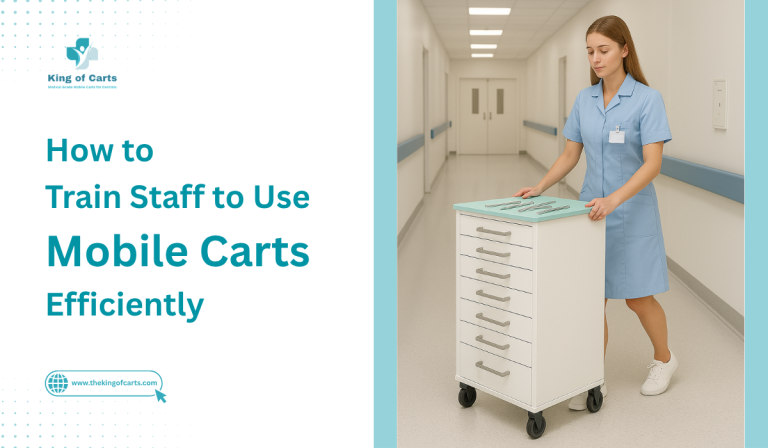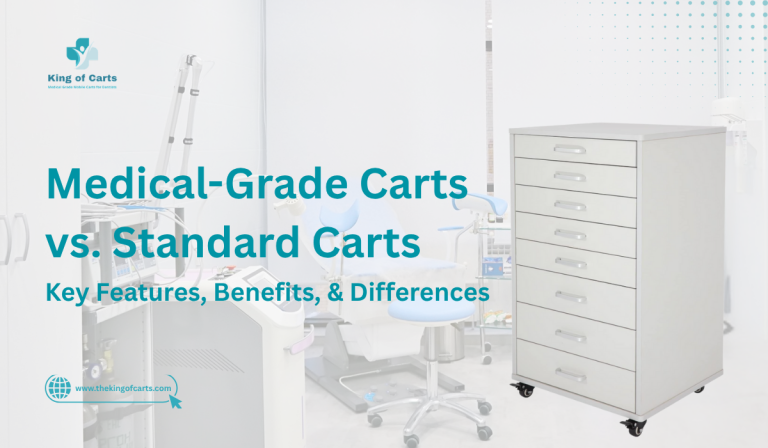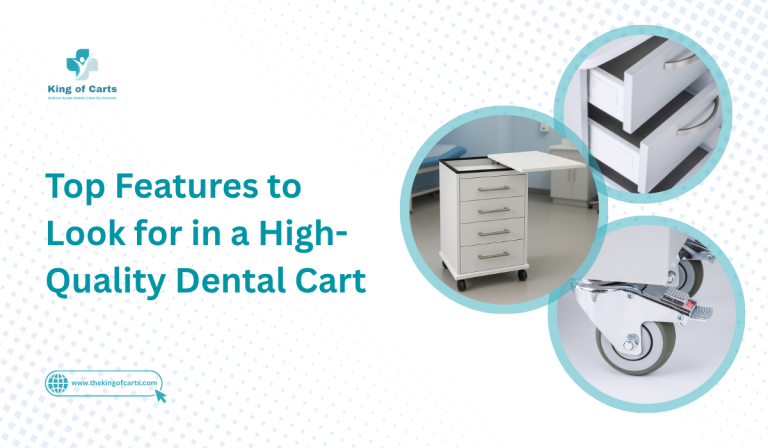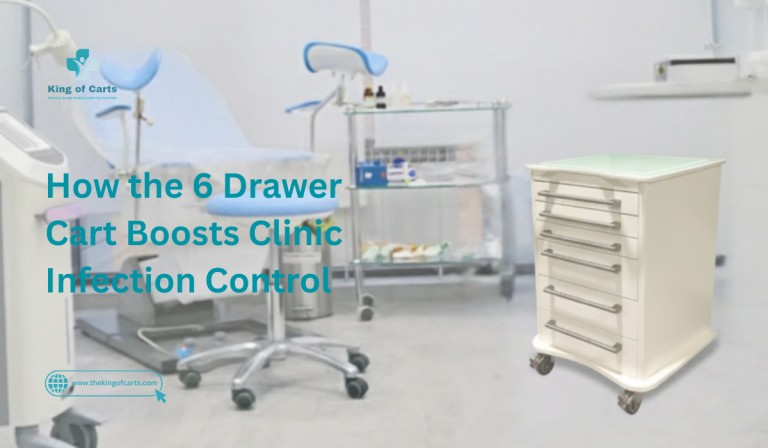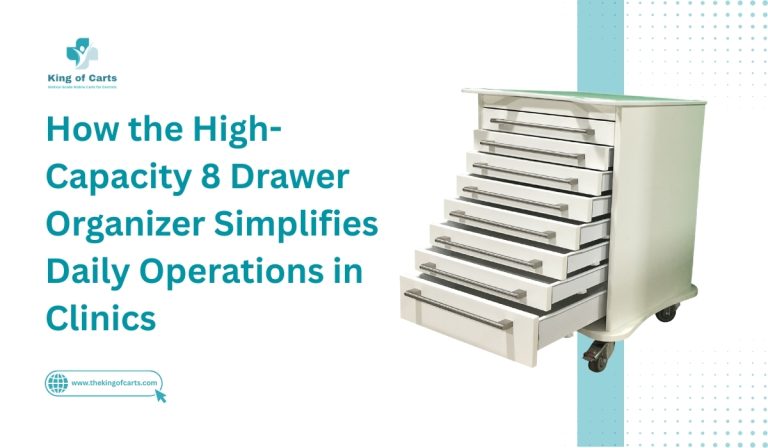In busy workplaces like hotels, hospitals, offices, and cleaning operations, mobile carts are not just handy tools—they’re essential. These carts carry everything from cleaning supplies and linens to food trays, documents, or medical instruments. They help employees move faster, stay organized, and complete tasks with greater accuracy.
But here’s the catch: the effectiveness of mobile carts depends as much on the people using them as on their design. Without proper training, even the most advanced carts can lead to inefficiencies, safety issues, and unnecessary wear and tear.
That’s why it’s important to train your team step-by-step—not only to use the carts efficiently but also to handle them safely and maintain them properly. Let’s break down how you can do this the right way.
Why Proper Mobile Cart Training Matters
Many organizations treat carts as simple tools that need no explanation. However, overlooking proper training can cause a surprising number of problems, such as:
- Reduced productivity: When carts are unorganized, employees waste time searching for tools or supplies.
- Injury risks: Incorrect pushing or lifting can cause strain, slips, or accidents.
- Equipment damage: Overloading or mishandling can damage wheels, handles, or frames.
- Poor customer experience: Delayed or disorganized service can reduce satisfaction.
In contrast, a well-trained team can move efficiently, minimize risk, and deliver professional service consistently. Proper training not only improves workflow but also boosts staff morale and reduces fatigue.
Step 1: Begin with Orientation
Before anyone uses a mobile cart, they should understand what they’re handling and how it works.
Your orientation session should include:
- Cart Types: Explain the different carts your facility uses—utility mobile cart, Assistant North Carolina Cart, 4 Drawer Medical-Grade Storage Unit, High-Capacity 8 Drawer Organizer, 2 Drawer & 3 Shelf Mobile Storage Cart, and more.
- Functions & Features: Demonstrate how compartments, drawers, or locking mechanisms work.
- Do’s & Don’ts: Cover essential rules like weight limits, cleanliness, and where carts can or cannot be parked.
A hands-on demo is best. Let employees push, load, and explore the cart during training. This builds confidence and reduces the chance of operational mistakes later.
Step 2: Teach Proper Loading and Organization
How a cart is loaded can make or break its efficiency. An overloaded or unevenly packed cart is harder to push and more prone to tipping.
Train staff to:
- Balance the Load: Distribute weight evenly, placing heavier items at the bottom.
- Organize by Use: Keep frequently used items in accessible spots.
- Label Compartments: Use color codes, tags, or small labels for quick identification.
- Avoid Overloading: Follow the cart’s weight limit to prevent wheel or frame damage.
Encourage employees to treat their cart like their mobile workstation—everything should have a proper place, and that place should be maintained daily.
Step 3: Train on Movement and Navigation
In crowded environments like hotel corridors or hospital hallways, navigation can be tricky. Proper cart movement helps prevent accidents and damage.
Your training should include:
- Push, Don’t Pull: Pushing gives better control and visibility.
- Control Speed: Move slowly, especially around corners or crowded areas.
- Stay Aware: Keep an eye out for people, doors, or obstacles.
- Use Brakes: Always engage brakes when parked.
- Smart Parking: Never block pathways, exits, or emergency areas.
Include practical drills—for example, guiding carts through narrow spaces, ramps, and elevators—to build real-world skills.
Step 4: Routine Maintenance and Inspection
Even durable carts need care. A few minutes of routine inspection can prevent downtime or damage.
Teach staff to perform regular checks such as:
- Testing wheels and casters for smooth motion.
- Inspecting handles, frames, and brakes for wear or cracks.
- Cleaning the surfaces to remove dirt or chemical buildup.
- Reporting issues immediately to supervisors.
Provide a maintenance checklist that staff can tick off daily or weekly. This habit builds responsibility and extends the cart’s lifespan.
Step 5: Focus on Safety and Ergonomics
Safety should always come first. Repetitive pushing or lifting can lead to muscle strain if done incorrectly.
Train your team on:
- Correct Posture: Keep the back straight and use body weight to push.
- Avoid Sudden Movements: Accelerate and stop gradually.
- Use Protective Gear: Non-slip shoes and gloves are a must.
- Teamwork: Use two people for heavy or oversized carts.
Short ergonomics sessions—through videos or live demos—can make a big difference in preventing workplace injuries.
Step 6: Role-Based Training Customization
Different departments use carts differently. Customizing training ensures each group gets relevant guidance.
- Housekeeping: Emphasize chemical safety, waste segregation, and hygiene.
- Catering & F&B: Focus on food safety, temperature control, and avoiding cross-contamination.
- Healthcare: Include infection control, sterile storage, and patient privacy.
- Maintenance: Highlight tool safety, hazard awareness, and efficient organization.
Tailored sessions make the training practical and easier to apply immediately.
Step 7: Use Technology for Better Training
Modern tools can make training faster and more engaging:
- Video Tutorials: Record short demonstrations for on-demand access.
- Digital Checklists: Use QR codes or mobile apps for inspection tracking.
- Refresher Courses: Conduct quarterly retraining sessions.
Gamified Learning: Reward teams for maintaining the best-organized carts.
Technology keeps training consistent, especially in large teams with rotating staff.
Step 8: Monitor, Evaluate, and Give Feedback
Training doesn’t stop after one session—it’s an ongoing process. Supervisors should:
- Observe Daily Operations: Watch how employees use carts during shifts.
- Encourage Mentorship: Let experienced staff guide newcomers.
- Recognize Good Practices: Reward employees who maintain standards.
Gather Feedback: Ask staff for suggestions to improve setup or workflow.
A feedback culture keeps everyone engaged and ensures continuous improvement.
Avoid Common Mistakes
Even trained staff can make small mistakes that affect safety and efficiency when using mobile carts. Over time, these habits can slow operations, cause damage, or create safety risks. Recognizing and correcting these common errors helps maintain smooth workflows, extends cart lifespan, and ensures a more organized, professional working environment.
- Overloading carts: Placing excessive weight on carts can strain wheels, damage frames, and increase the risk of tipping, leading to accidents and reduced efficiency during daily operations.
- Ignoring cleaning or maintenance: Neglecting regular cleaning or inspection allows dirt buildup and unnoticed damage, reducing cart lifespan and creating hygiene and safety concerns in workplaces like hospitals or hotels.
- Using damaged carts: Operating carts with broken wheels, handles, or brakes compromises safety, slows down tasks, and can lead to further damage or injuries if not promptly repaired.
- Pulling instead of pushing: Pulling carts strains the back and reduces control, especially in tight spaces. Pushing keeps posture stable and provides better visibility, preventing accidents and fatigue.
- Blocking hallways or exits: Parking carts in walkways or doorways disrupts movement, violates safety regulations, and may delay emergency responses, affecting overall workplace efficiency and safety compliance.
- Forgetting to secure brakes: Failing to lock brakes on parked carts can cause unintended movement, collisions, or injuries—especially on slopes or uneven surfaces—posing serious safety hazards.
Build a Culture of Care and Responsibility
Training should not only teach skills but also inspire ownership. Encourage a sense of responsibility and pride among staff by fostering teamwork, accountability, and consistent care for their equipment.
- Allowing staff to label or personalize their carts.
- Conducting short weekly “cart check” sessions.
- Sharing efficiency tips in meetings.
- Leading by example—when supervisors use carts correctly, staff follow suit.
When employees take pride in their equipment, efficiency naturally increases.
Long-Term Benefits of Proper Cart Training
Investing in training delivers benefits across the board:
- Higher Productivity: When staff are trained to use mobile carts efficiently, tasks get completed faster with fewer interruptions. Proper organization and handling reduce wasted time, helping teams move seamlessly between tasks and improving overall operational speed and workflow.
- Better Safety: Training minimizes the chances of workplace injuries caused by incorrect lifting, pushing, or overloading carts. Staff learn ergonomic practices and safe navigation, creating a safer environment for both employees and customers or patients.
- Lower Maintenance Costs: Well-trained employees handle carts with care, perform regular inspections, and report issues early. This proactive approach reduces wear and tear, prevents breakdowns, and extends the life of carts—saving the organization repair and replacement expenses.
- Professional Image: Organized and well-maintained carts reflect a sense of discipline, cleanliness, and professionalism. Whether in a hospital corridor or hotel hallway, neat carts create a positive impression that enhances the credibility and reputation of your business.
- Happier Employees: When staff receive proper training, they feel more confident, valued, and less stressed in their work. Knowing exactly how to use and maintain their tools fosters job satisfaction, teamwork, and long-term loyalty to the organization.
In service-driven industries like healthcare and hospitality, these improvements directly impact your reputation and bottom line.
Conclusion
Training your staff to use mobile carts efficiently isn’t just about moving things—it’s about moving smarter. A structured training program that covers orientation, organization, movement, safety, and maintenance helps your team work safely, efficiently, and confidently.
When your employees master mobile cart management, you’ll notice smoother operations, happier teams, and better service outcomes. Because in any professional setting, a well-used cart isn’t just a tool—it’s a sign of operational excellence. Dental mobile carts may be simple tools, but when used effectively, they become a cornerstone of operational excellence.
